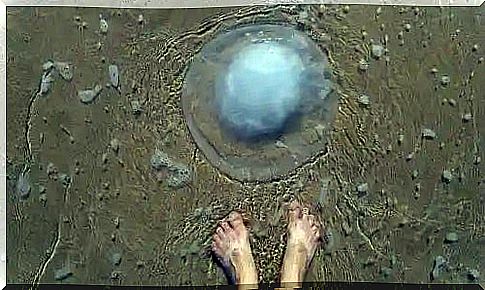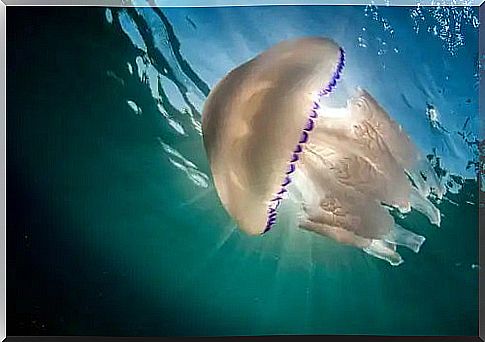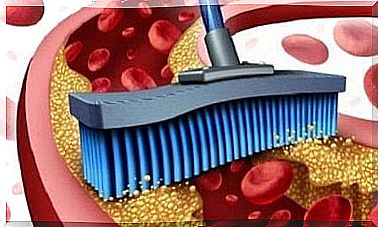How To Prevent And Treat Jellyfish Bites?

When summer comes, the winds and currents change. The temperature rises both on land and in the waters of the northern hemisphere, and the jellyfish population is dragged to the coast. With this in mind, experts issue a warning message about jellyfish bites.
A jellyfish looks, with the naked eye, like a jelly-like table, with tentacles floating in the sea. And while they may seem harmless, the truth is that their tentacles contain a large amount of neurotoxins, which they use to immobilize their prey so that they can easily ingest it. Although most species do not have a lethal sting, the exception is the Australian jellyfish, whose sting is fatal.
Jellyfish that are most commonly found in our waters are not lethal. Their bite can be severe. By touch, it releases toxins that cause pain and itching.
Symptoms of jellyfish stings
- Rash, irritation and redness of the skin
- Burns (which can become unbearable in case of ulcers and blisters)
- Feeling tingling and numbness in the affected area
- Headache (mild to moderate intensity)
- Nausea, dizziness and nervousness (only in severe cases)

Jellyfish bites: prevention
All swimmers are advised to apply creams with protection for jellyfish stings all over the body, especially in the abdomen, back, arms and legs, as they are the most affected. The idea is not to leave the most exposed areas of the body unprotected.
Currently, Safe Sea is the only brand on the market that has medical approval, internationally, because it is created by marine scientists and biotechnologists dedicated to human health and environmental care.
Its product line is hypoallergenic and waterproof, which means that its application on the face and body is completely safe. It also offers double protection: sun protection and protection against jellyfish stings. Regarding the correct use, certain aspects must be taken into account:
- The product should be applied to clean and dry skin at least 30 minutes before sun exposure and the first bath.
- Spread the product on the skin with slow movements to completely cover different areas.
- Allow the product to absorb before wearing clothes.
- Reapply the product after 80 minutes of water activity.
Other precautions include avoiding these animals, even if they are dead, because they still have venom in them. It is very important to pass this on to the children, because their curiosity makes them want to play with the jellyfish in the sand. If you are going to swim in deeper waters, it is recommended to use a suit with a suitable thick fabric : neoprene or thick lycra.
First aid
- Do not rub the affected area with sand or towels.
- Wash the area with sea water.
- Put a packet of ice on the bite for at least 20 minutes.
- If the tentacles are still attached to the skin, apply vinegar to stop the injection of the poison. And a baking soda solution can work.
- Do not spray ammonia or urine on the affected area; this measure only works for fish bites.
- The person who removes the tentacles must not, under any circumstances, work without gloves.
- Go immediately to the emergency department of the nearest hospital.
Treatment for jellyfish bites
It is very important to know as much as possible about jellyfish. The success of drug treatment depends largely on this information.
In the first instance, the doctor must remove the poisonous residue. He will then use topical corticosteroids, anti-inflammatory drugs and oral antihistamines. In case of infection, treatment will include topical antibiotics.
If the affected person is allergic, the doctor will apply special treatment to prevent the worsening of symptoms. However, the primary care measures mentioned above serve to assist the person from the moment of the bite until hospitalization.









